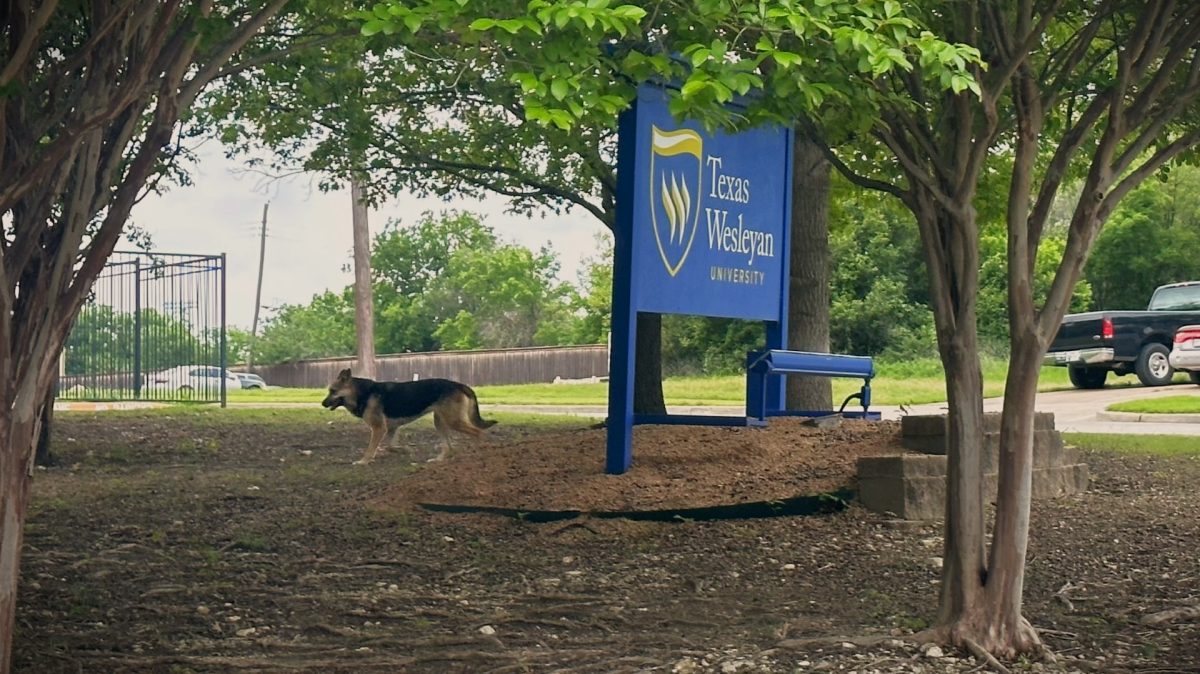There’s something big and green lurking on the north side of the Sid W. Richardson Center at Texas Wesleyan University, and it’s about to save the university some serious green as well.
The Combined Heat and Power Plant (CHP) is the heart of Wesleyan’s Energy Saving Project and will be up and running by March 1, according to Brian Franks, executive director of facilities, development and operations.
“The CHP is fueled by natural gas and generates 700 kilowatts per hour,” Franks said. “It also captures the heat it generates off of the engine and runs it into our central plant, allowing us to distribute that heat around campus for our heating needs.”
And thanks to an absorption chiller, otherwise wasted heat can be used to cool the campus as well, according to university President Frederick Slabach.
“This new system will provide 80 percent of our power needs for 80 percent of our buildings on campus,” Slabach said.
The power plant alone is expected to save Wesleyan $377,000 a year, and, according to Slabach, should pay for itself within 15 years. But savings from additional energy and water conservation upgrades could bring the total savings to more than $500,000 a year.
These upgrades include water savings through new plumbing fixtures and a new irrigation system that can not only sense moisture in the ground, but also looks at weather patterns to prevent waste, Franks said.
More than 7.1 million gallons of water and 7.2 million kilowatt-hours of energy will be saved per year thanks to these upgrades, Director of Communications Ann Davis wrote in an email. This is equivalent to removing 1,054 cars from the road.
Wesleyan is the eighth university in Texas with this power plant system, joining much larger schools like Texas Tech and Texas A&M.
“Technology has evolved enough so that we’re able to utilize this type of infrastructure on a smaller campus,” Franks said.





![Pippin, played by Hunter Heart, leads a musical number in the second act of the musical. [Photo courtesy Kris Ikejiri]](https://therambler.org/wp-content/uploads/2025/04/Pippin-Review-1200x800.jpg)
![Hunter Heart (center), the play's lead, rehearses a scene alongside other student actors. [Photo courtesy Jacob Sanchez]](https://therambler.org/wp-content/uploads/2025/04/thumbnail_IMG_8412-1200x816.jpg)
![Student actors rehearse for Pippin, Theatre Wesleyan's upcoming musical. [Photo courtesy Jacob Rivera-Sanchez]](https://therambler.org/wp-content/uploads/2025/04/Pippin-Preview-1200x739.jpg)

![Harriet and Warren, played by Trinity Chenault and Trent Cole, embrace in a hug [Photo courtesy Lauren Hunt]](https://therambler.org/wp-content/uploads/2025/02/lettersfromthelibrary_01-1200x800.jpg)





![The Texas Wesleyan University women's golf team walks the course. [Photo courtesy of Corrina Griffin]](https://therambler.org/wp-content/uploads/2025/04/rounds-902x1200.jpg)



![Lady Rams softball wraps up weekend against Nelson Lions with a victory [6 – 1]](https://therambler.org/wp-content/uploads/2025/04/Screenshot-2025-04-04-100924-1200x647.png)


![Lady Rams softball sweep Langston Lions in first SAC Doubleheader [2 – 0]](https://therambler.org/wp-content/uploads/2025/02/SoftballLions.png)











